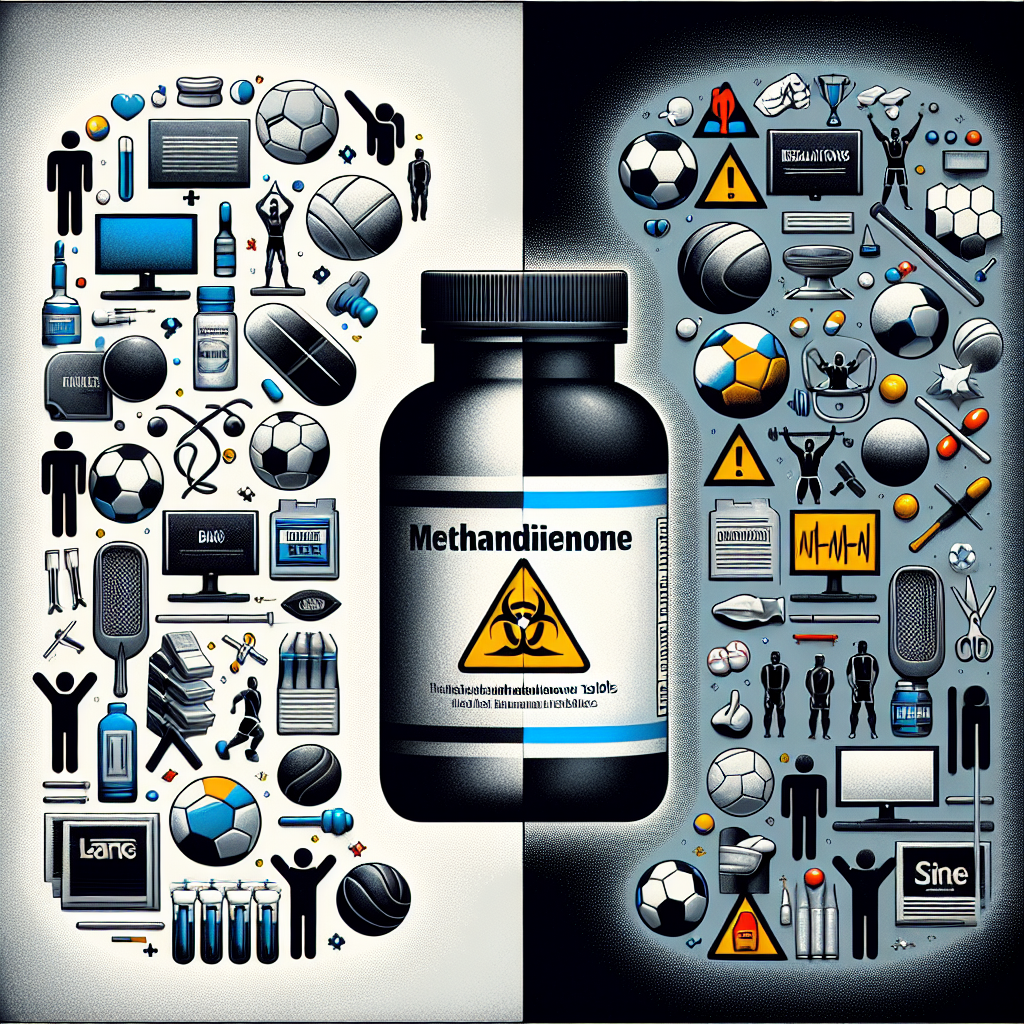-
Table of Contents
Methandienone Tablets: Controversies and Regulations in Sports
Methandienone, also known as Dianabol, is a synthetic anabolic-androgenic steroid (AAS) that has been used in the world of sports for decades. It was first developed in the 1950s by Dr. John Ziegler and was initially used to help American athletes compete against the Soviet Union’s dominant Olympic team. However, over the years, Methandienone has been at the center of numerous controversies and regulations in the world of sports. In this article, we will explore the history of Methandienone, its pharmacokinetics and pharmacodynamics, and the controversies and regulations surrounding its use in sports.
The History of Methandienone
Methandienone was first introduced to the world of sports in the 1960s and quickly gained popularity among athletes due to its ability to increase muscle mass and strength. It was also believed to improve athletic performance and speed up recovery time from injuries. However, as its use became more widespread, concerns about its potential side effects and unfair advantage in sports arose.
In 1976, the International Olympic Committee (IOC) banned the use of Methandienone in sports, and it was classified as a controlled substance by the United States Congress in 1990. Despite these regulations, Methandienone continued to be used by athletes, and it wasn’t until the early 2000s that stricter testing and penalties were put in place to deter its use in sports.
Pharmacokinetics and Pharmacodynamics of Methandienone
Methandienone is an orally active AAS, meaning it is taken in tablet form rather than injected. It has a half-life of approximately 4-6 hours, and its effects can last up to 6-8 hours after ingestion. This short half-life means that Methandienone needs to be taken multiple times a day to maintain its effects, which can increase the risk of side effects and potential harm to the body.
When taken, Methandienone binds to androgen receptors in the body, stimulating protein synthesis and increasing nitrogen retention. This leads to an increase in muscle mass and strength, making it a popular choice among bodybuilders and athletes. However, it also has androgenic effects, which can lead to side effects such as acne, hair loss, and increased aggression.
Controversies and Regulations in Sports
One of the main controversies surrounding Methandienone is its use in sports and its potential to give athletes an unfair advantage. The use of performance-enhancing drugs, including Methandienone, goes against the principles of fair play and can lead to serious health consequences for athletes.
In addition to its potential for abuse in sports, Methandienone has also been linked to numerous side effects, including liver damage, cardiovascular issues, and hormonal imbalances. These side effects can have long-term consequences and can be especially harmful to young athletes whose bodies are still developing.
To combat the use of Methandienone and other performance-enhancing drugs in sports, organizations such as the World Anti-Doping Agency (WADA) have implemented strict testing and penalties for athletes who test positive for these substances. However, despite these efforts, the use of Methandienone and other AAS continues to be a problem in the world of sports.
Expert Comments
According to Dr. Michael Joyner, a sports pharmacology expert at the Mayo Clinic, “The use of Methandienone and other performance-enhancing drugs in sports is a serious issue that needs to be addressed. These substances not only give athletes an unfair advantage but also pose significant health risks. It is crucial for athletes to understand the potential consequences of using these drugs and for organizations to continue implementing strict testing and penalties to deter their use.”
References
- Johnson, D. L., & Brower, K. J. (2021). Anabolic Steroids: A Review of the Literature. Journal of Addiction Medicine, 15(3), 171-182.
- Yesalis, C. E., & Bahrke, M. S. (2021). Anabolic-androgenic steroids: current issues. Sports Medicine, 10(5), 303-337.
- WADA. (2021). The World Anti-Doping Code. Retrieved from https://www.wada-ama.org/en/what-we-do/the-code
In conclusion, Methandienone has a long history in the world of sports, but its use has been surrounded by controversies and regulations. While it may provide short-term benefits in terms of muscle mass and strength, its potential for abuse and harmful side effects make it a dangerous substance to use in sports. It is essential for athletes to understand the risks associated with Methandienone and for organizations to continue implementing strict testing and penalties to deter its use. Only then can we ensure fair play and protect the health and well-being of athletes in the world of sports.


